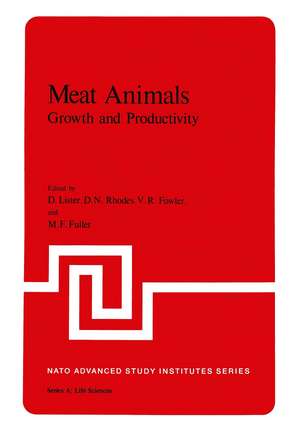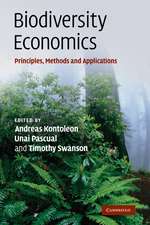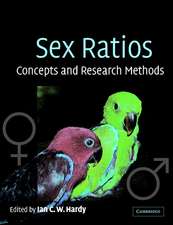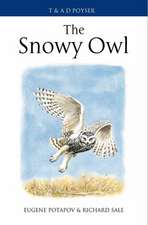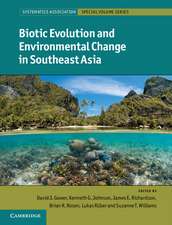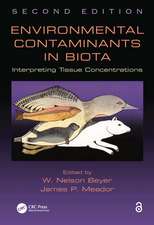Meat Animals: Growth and Productivity: NATO Science Series A:, cartea 7
Editat de D. Listeren Limba Engleză Paperback – 12 dec 2012
Din seria NATO Science Series A:
- 15%
 Preț: 656.58 lei
Preț: 656.58 lei - 15%
 Preț: 655.13 lei
Preț: 655.13 lei - 15%
 Preț: 678.35 lei
Preț: 678.35 lei -
 Preț: 397.38 lei
Preț: 397.38 lei - 5%
 Preț: 377.87 lei
Preț: 377.87 lei -
 Preț: 397.76 lei
Preț: 397.76 lei - 18%
 Preț: 1232.41 lei
Preț: 1232.41 lei - 5%
 Preț: 731.64 lei
Preț: 731.64 lei -
 Preț: 413.15 lei
Preț: 413.15 lei - 15%
 Preț: 649.22 lei
Preț: 649.22 lei - 5%
 Preț: 369.45 lei
Preț: 369.45 lei -
 Preț: 407.56 lei
Preț: 407.56 lei - 5%
 Preț: 2162.19 lei
Preț: 2162.19 lei -
 Preț: 407.39 lei
Preț: 407.39 lei -
 Preț: 396.40 lei
Preț: 396.40 lei - 15%
 Preț: 663.93 lei
Preț: 663.93 lei -
 Preț: 387.38 lei
Preț: 387.38 lei -
 Preț: 393.13 lei
Preț: 393.13 lei -
 Preț: 398.35 lei
Preț: 398.35 lei -
 Preț: 401.24 lei
Preț: 401.24 lei - 15%
 Preț: 678.81 lei
Preț: 678.81 lei -
 Preț: 395.09 lei
Preț: 395.09 lei - 18%
 Preț: 952.40 lei
Preț: 952.40 lei - 15%
 Preț: 654.43 lei
Preț: 654.43 lei -
 Preț: 402.00 lei
Preț: 402.00 lei -
 Preț: 401.24 lei
Preț: 401.24 lei - 15%
 Preț: 655.27 lei
Preț: 655.27 lei -
 Preț: 394.71 lei
Preț: 394.71 lei -
 Preț: 384.48 lei
Preț: 384.48 lei - 5%
 Preț: 395.61 lei
Preț: 395.61 lei - 5%
 Preț: 1421.57 lei
Preț: 1421.57 lei - 15%
 Preț: 651.34 lei
Preț: 651.34 lei -
 Preț: 400.10 lei
Preț: 400.10 lei -
 Preț: 386.99 lei
Preț: 386.99 lei - 5%
 Preț: 386.11 lei
Preț: 386.11 lei -
 Preț: 403.91 lei
Preț: 403.91 lei - 15%
 Preț: 651.51 lei
Preț: 651.51 lei -
 Preț: 393.90 lei
Preț: 393.90 lei - 5%
 Preț: 376.43 lei
Preț: 376.43 lei -
 Preț: 400.26 lei
Preț: 400.26 lei - 5%
 Preț: 388.84 lei
Preț: 388.84 lei -
 Preț: 400.65 lei
Preț: 400.65 lei - 5%
 Preț: 740.58 lei
Preț: 740.58 lei - 18%
 Preț: 1225.16 lei
Preț: 1225.16 lei - 5%
 Preț: 386.46 lei
Preț: 386.46 lei -
 Preț: 421.82 lei
Preț: 421.82 lei
Preț: 407.56 lei
Nou
Puncte Express: 611
Preț estimativ în valută:
77.99€ • 80.46$ • 65.08£
77.99€ • 80.46$ • 65.08£
Carte tipărită la comandă
Livrare economică 26 martie-09 aprilie
Preluare comenzi: 021 569.72.76
Specificații
ISBN-13: 9781461589051
ISBN-10: 1461589053
Pagini: 556
Ilustrații: XII, 541 p. 6 illus.
Greutate: 0.88 kg
Ediția:Softcover reprint of the original 1st ed. 1976
Editura: Springer Us
Colecția Springer
Seria NATO Science Series A:
Locul publicării:New York, NY, United States
ISBN-10: 1461589053
Pagini: 556
Ilustrații: XII, 541 p. 6 illus.
Greutate: 0.88 kg
Ediția:Softcover reprint of the original 1st ed. 1976
Editura: Springer Us
Colecția Springer
Seria NATO Science Series A:
Locul publicării:New York, NY, United States
Public țintă
ResearchCuprins
Welcome.- Welcome.- 1 What Do We Want from the Carcass?.- I The Efficiency of Meat-Producing Systems.- 2 The Relevance of Various Measures of Efficiency.- 3 The Influence of Reproductive Rate on the Efficiency of Meat Production in Animal Populations.- 4 The Optimum Size and Structure of Enterprise.- II The Efficiency of Food Conversion.- 5 Comparison of Biological Mechanisms for Conversion of Feed to Meat.- 6 Efficiencies of Energy Utilization during Growth.- 7 Efficiency of Protein Utilization.- III The Development of Muscle.- 8 Towards More Efficient Meat Animals: A Theoretical Consideration of Constraints at the Level of the Muscle Cell.- 9 Factors Affecting Muscle Size and Structure.- IV The Development of Fatty Tissue.- 10 Physiological Significance of Lipids.- 11 The Control of Fat Absorption, Deposition and Mobilization in Farm Animals.- V Endocrine Regulation.- 12 Hormonal Control of Muscle Growth.- 13 Protein-Fat Interactions.- VI Overall Control of Growth.- 14 The Right Size.- 15 The Central Control of Growth: Its Connection with Age-dependent Disease.- VII Environmental Control of Growth.- 16 Environmental Control of Growth: The Maternal Environment.- 17 The Nutritional Control of Growth.- 18 Climate and Season.- VIII Physiological Significance of Differences in Body Composition.- 19 The Physiological Basis of Reproductive Efficiency.- 20 Hormonal Influences on the Growth, Metabolism and Body Composition of Pigs.- 21 Observations of the Apparent Antagonism between Meat-producing Capacity and Meat Quality in Pigs.- IX The Technology of Producing Meat Animals.- 22 Meat Production from Ruminants.- 23 Advances in Pig Technology.- X The Use of Genetic Potential.- 24 The Choice of Selection Objectives in Meat-producing Animals.- 25 Using the World’s GeneticResources.- XI The Challenge of New Foods.- 26 Vegetable Protein as a Human Food — Background and Present Situation.- 27 Vegetable Protein as a Human Food — Research and Development in the National Food Research Institute.- 28 Single Cell Protein as a Feedstuff.- XII Final Perspectives.- Final Perspectives.- Participants.
